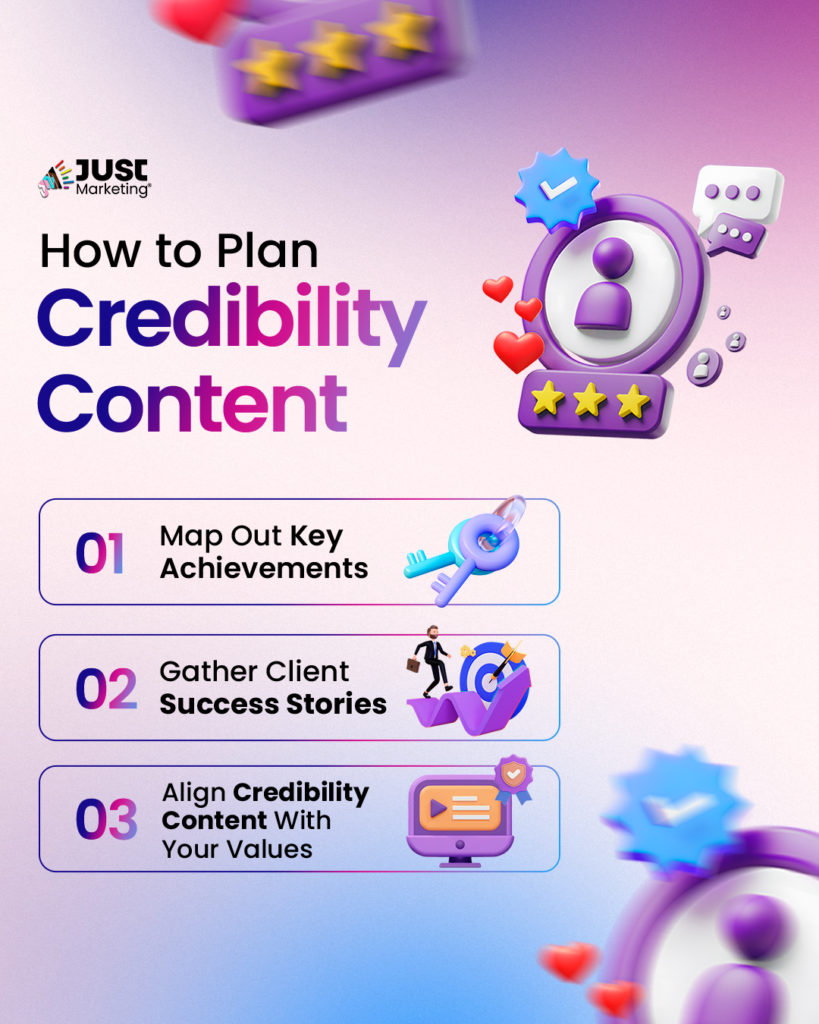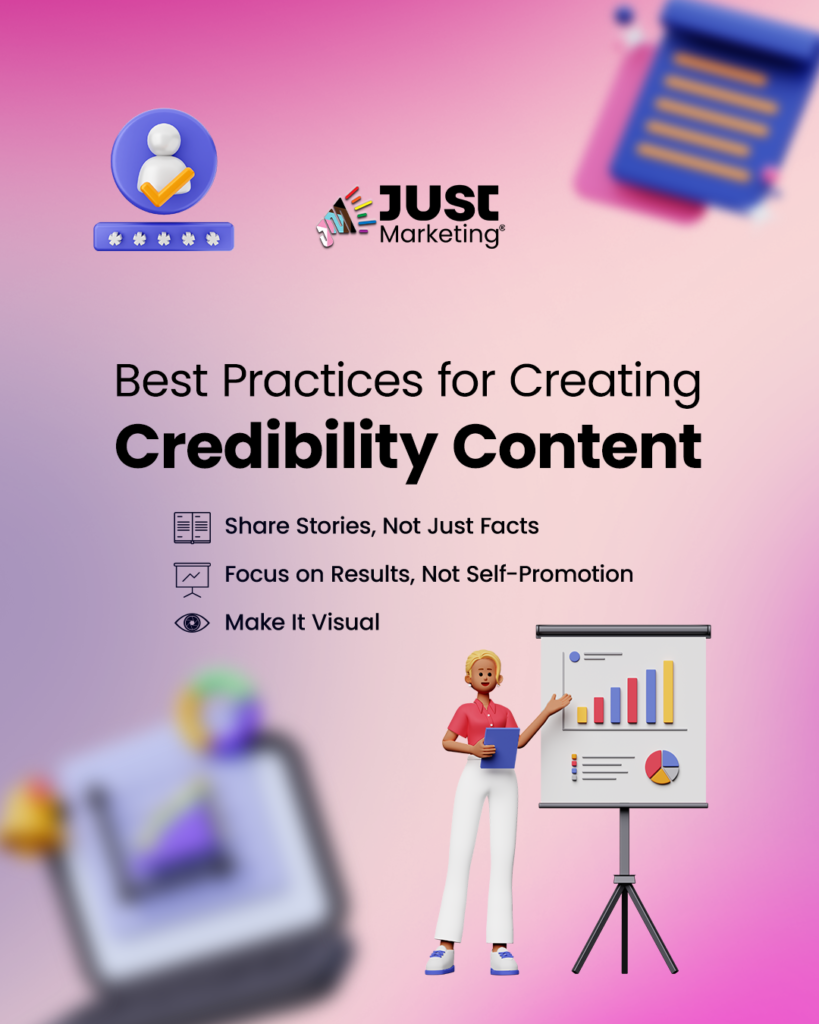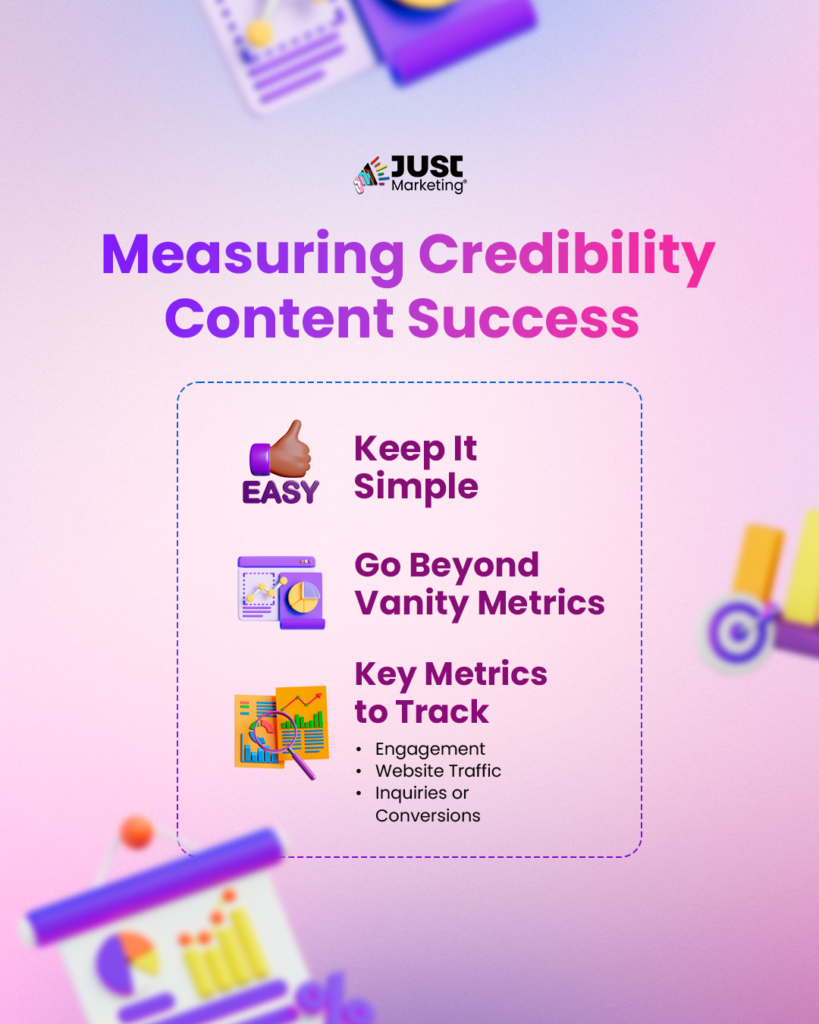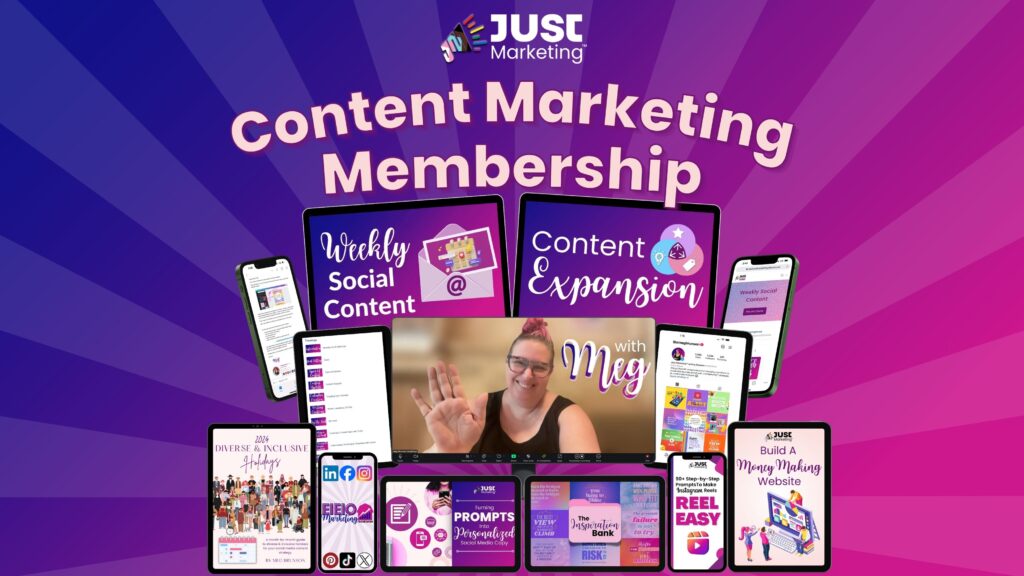For many entrepreneurs, especially those who prioritize ethics and inclusivity, the idea of self-promotion can feel awkward—or even misaligned with their values. But here’s the thing: showcasing your achievements isn’t about boasting; it’s about building trust. Your audience needs to see proof of your expertise to believe in what you can do for them.
That’s where credibility content comes in. It’s an empowering way to share your success stories, highlight your expertise, and demonstrate your value—all while staying true to your mission.
Not only does credibility content strengthen the trust between you and your audience, but it also opens doors to opportunities like partnerships, referrals, and meaningful growth. By the end of this post, you’ll feel confident creating credibility content that reflects your values and elevates your brand authentically.
What Is Credibility Content?

Credibility content is the proof behind the promises you make to your audience. It highlights your expertise, showcases results, and builds trust by demonstrating that you deliver on what you say. This type of content allows you to share your achievements in a way that feels authentic and aligned with your values, rather than overly promotional.
Examples of Credibility Content
- Social Proof: Testimonials, case studies, awards, or features from respected publications or experts.
- Differentiators: Content that highlights what makes you stand out, like your unique approach or niche expertise.
- Authority-Builders: Behind-the-scenes stories, client transformations, or lessons learned from your experiences.
Credibility content resonates because it reduces skepticism and provides your audience with tangible proof of your capabilities. Here’s how it benefits your brand:
- Builds Confidence: Your audience feels reassured that you can solve their problems.
- Reinforces Authority: It solidifies your reputation as an expert in your niche.
- Enhances Reputation: Strong credibility content creates opportunities for referrals and partnerships.
- Drives Business Growth: It builds trust, which can lead to more inquiries, collaborations, and conversions.
Credibility content is most impactful when it focuses on real outcomes and genuine experiences. Instead of inflating your achievements or highlighting extreme examples of success, share stories that uplift your clients or collaborators and share the average outcomes. This not only reinforces your authenticity but also aligns with values of inclusivity, accessibility, and ethical marketing.
Planning Credibility Content

Creating credibility content doesn’t have to feel overwhelming. With a bit of planning and intention, you can gather the proof you need to build trust with your audience while staying aligned with your values. Here’s how to get started:
Step 1: Map Out Key Achievements
Begin by identifying milestones, certifications, or awards that reflect your expertise. If you’re just starting out, focus on personal wins or unique approaches that set you apart in your niche.
Example:
If you recently received a certification, share it on LinkedIn with a short story about what inspired you to earn it and how it supports your mission.
Step 2: Gather Client Success Stories
Your clients’ experiences are some of the most compelling forms of credibility content. Reach out to past clients and ask for testimonials or permission to share their success stories.
Tips for Requesting Testimonials:
- Offer to record the testimonial during a recorded zoom call so that you can use the video as well as transcribe the testimonial to use in text-based promotions. Often times I’ve found people are comfortable meeting on zoom and delivering testimonials in a conversational way.
Zoom Testimonial Tips:- Ensure the client is willing to be on video
- Record in “gallery” so you have the clear video of your client – you can crop yourself out.
- Ask your client to answer each question in a complete sentence.
- Mute yourself as your client answers.
- Transcribe the testimonial clips and clean them up – we don’t speak in the same way we write, so edit the testimonials to read well.
- Provide the edited written testimonial back to your client and ask them to post it on Facebook, LinkedIn, Google, etc.
- If the client isn’t comfortable being on video, you could create a google form to send them, or just send your questions to them via email.
- Ask specific questions like:
- “What challenges were you facing before we worked together?”
- “What specific results did you achieve after working with me?”
Pro Tip: When sharing success stories, focus on how your work made a difference in their lives or businesses rather than simply listing achievements.
Step 3: Align Credibility Content With Your Values
Your credibility content should reflect what you stand for. Highlight stories and achievements that align with your commitment to inclusivity, ethics, and accessibility.
Example:
If you’ve worked with underrepresented communities or implemented accessible solutions, share these stories to showcase your dedication to creating positive impact.
By planning your credibility content with intention, you’ll ensure that it reflects your expertise, builds trust, and reinforces the values that define your brand.
Best Practices for Creating Credibility Content

Once you’ve identified your achievements and gathered success stories, the next step is crafting credibility content that resonates with your audience. Here are some tips to ensure your content feels authentic and impactful:
Tip 1: Share Stories, Not Just Facts
Facts and figures are impressive, but stories are what truly captivate your audience. Use storytelling to connect emotionally and make your accomplishments relatable.
Example:
Instead of saying, “I helped a client grow their revenue by 50%,” share the story behind it:
“After struggling with inconsistent messaging, my client and I revamped their content strategy. Within six months, they saw a 50% increase in revenue—and now, they feel confident showing up online.”
Tip 2: Focus on Results, Not Self-Promotion
Credibility content isn’t about listing your achievements; it’s about showing how your work benefits others. Center the results and transformations your clients experience because of your expertise.
Example:
Create a case study that walks your audience through a specific client’s journey—from the challenges they faced to the results they achieved with your help. This approach highlights your impact while keeping the focus on your clients.
Tip 3: Make It Visual
Visual elements can bring your credibility content to life and make it more engaging. Use tools like Canva or apps that create accessible, on-brand visuals.
Ideas for Visual Content:
- Before-and-After Graphics: Show transformations or measurable results.
- Video Testimonials: Ask clients to share their stories in a short video.
- Screenshots of Results: Highlight metrics or milestones (e.g., an email campaign’s open rates or website traffic growth).
By weaving storytelling, results, and visuals into your credibility content, you’ll create pieces that are not only engaging but also build genuine trust with your audience.
Repurposing Credibility Content

Credibility content is too valuable to share just once. By repurposing your content, you can extend its lifespan, reach new audiences, and maximize its impact across multiple platforms. Here’s how to get the most out of your credibility content:
Turn One Piece Into Multiple Formats
Think of your content as a building block that can be reimagined in different ways to suit various platforms and audiences.
Examples of Repurposing:
- Testimonial:
- Share it as a quote graphic on Instagram.
- Expand it into a LinkedIn post with additional context about the client’s journey.
- Feature it in a blog post as part of a success story roundup.
- Case Study:
- Create a podcast episode or YouTube video breaking down the key takeaways.
- Write an email campaign that shares the case study and invites your audience to explore your services.
- Press Feature or Award:
- Post a screenshot of the feature in your Instagram Stories with a swipe-up link.
- Expand on the story behind the recognition in a blog post or LinkedIn article.
Share in Formats That Fit Each Platform
Every platform has its strengths. Choose the right format for each channel to ensure your message resonates:
- On Instagram: Use visuals like graphics, photos, or short videos.
- On LinkedIn: Share in-depth insights with a professional tone.
- On your blog or website: Host longer-form content, like case studies or client success stories.
Keep Accessibility in Mind
As you repurpose, ensure your content is accessible to all.
- Add alt text to images.
- Include captions or transcripts for videos.
- Use clear, easy-to-read fonts and high-contrast colors.
Repurposing doesn’t just save you time—it amplifies the reach and impact of your content while reinforcing your credibility across multiple touchpoints.
Measuring Success

How do you know if your credibility content is working? By tracking the right metrics, you can gauge its effectiveness and make adjustments to maximize impact. Remember, the ultimate goal is building trust and authority—not just chasing numbers.
Key Metrics to Track
- Engagement:
- Look for comments, likes, and shares that show your audience is connecting with your content.
- Pay attention to meaningful comments like “This is inspiring!” or questions about your services.
- Website Traffic:
- Monitor visits to pages featuring testimonials, case studies, or press mentions.
- Use tools like Google Analytics to see how your audience interacts with credibility content on your site.
- Inquiries or Conversions:
- Track increases in inquiries, consultations booked, or purchases directly tied to credibility-focused content.
Keep It Simple
You don’t need a complicated system to track success. Start with a spreadsheet or a basic tool to log metrics like website visits, social media engagement, or client inquiries. Over time, you’ll be able to spot trends and identify which types of credibility content resonate most with your audience.
Beyond Vanity Metrics
While likes and shares can feel rewarding, true success lies in the deeper connections you build with your audience. Is your credibility content sparking conversations? Are people reaching out to learn more about your work? These are the signs that your content is doing its job.
By focusing on trust, authority, and relationship-building, you’ll create credibility content that not only strengthens your brand but also supports long-term growth.
Next Steps
Showcasing your credibility doesn’t have to feel like bragging. With the right approach, you can share your achievements and build trust in a way that aligns with your values and resonates with your audience.
Credibility content is about more than proving your expertise—it’s about creating meaningful connections, reducing skepticism, and inspiring confidence in your ability to deliver results. Whether it’s a client testimonial, a case study, or a behind-the-scenes story, this type of content allows you to highlight your impact authentically.
Identify one win, story, or testimonial you can share this week. Start small, and watch how sharing proof of your expertise opens doors to deeper trust, new opportunities, and greater growth.
Need support creating credibility content that feels authentic and impactful? Join my Content Marketing Membership for expert guidance, customizable templates, and a community of like-minded entrepreneurs committed to ethical, inclusive marketing.


